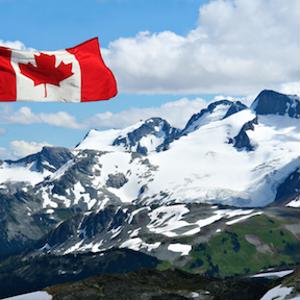Since the adoption of the Safe Food for Canadians Act in 2012, the Canadian government has been taking a more active approach to food safety and product labeling. While the purpose of the SFCA was to consolidate several outdated regulations under a single piece of legislation, it has also helped protect consumers from unsafe manufacturing practices by implementing tougher penalties for misleading or potentially dangerous activities, per the Canadian Food Inspection Agency. In the time since the SFCA was released, government officials have continued to push for ethical and transparent labeling practices to ensure shoppers have access to the product information they need to make informed buying decisions, including:
- Common name
- Country of origin
- Net quantity
- Ingredients and allergens
- Date markings and storage instructions
Under existing guidelines, food and beverage companies are required to include relevant information in English and French, which helps guarantee that all Canadian citizens have equal access to important product details. This rule does not apply to a business’s identity or principal place of business, slogans, preparation directions or specialty food items. Locally grown and prepared foods are also exempt from the bilingual requirement, though the CFIA encourages companies to use both official languages.
Canadian government to standardize country of origin labeling claims
In late-May, the Canadian Government released a public consultation campaign aimed at improving labeling guidelines for “Product of Canada” and “Made in Canada” claims. While these statements are entirely voluntary, many government officials have expressed concerns that existing regulations have prevented domestic food producers from effectively marketing their products. The proposed labeling requirements were developed in partnership with several prominent food industry associations operating in Canada, and included the following changes:
- Product of Canada: Under current guidelines, companies can only use Product of Canada claims if “all, or virtually all” of the ingredients, processing and labor involved in a food item’s manufacture are Canadian. This means that any products that contain more than 2% of imported ingredients would be excluded. If passed, the new proposal would lower the threshold from 98% to 85%, allowing more companies to include the statement on products’ packaging and labels.
- Made in Canada: Food companies are allowed to utilize Made in Canada claims so long as the “last substantial transformation” of a product takes place in Canada. This means that food items containing several imported ingredients can use the phrase, though it must be accompanied by a qualifying statement that identifies whether it is foreign or domestically sourced. The CFIA’s proposal would eliminate the qualifying statement requirement altogether.
“Consumers want to know when their food has a significant amount of Canadian ingredients so that they make informed decisions and support domestic food producers,” said Marie-Claude Bibeau, minister of Agriculture and Agri-Food, in a press release on the Canadian government’s website. “This initiative is an important part of our Food Policy for Canada, and the Buy Canadian Promotion campaign, which will promote the great foods produced by our world-class farmers across the country, and build pride and confidence in our food system.”
One of the biggest challenges of the proposed updated is the need to balance consumers’ interest in product transparency with less restrictive guidelines for food companies, which is why the CFIA has opened the issues up for public comment.
Keeping track of labeling regulations
Food and beverage companies that import their products face some of the strictest regulations, as all items must comply with Canada’s compositional and grade requirements. Food products must also be labeled, advertised and presented in a fashion that does not mislead consumers about their nutritional content or country of origin. However, because lawmakers are continuously updating existing guidelines and introducing new legislation, companies need to pay close attention to avoid hefty fines for deceptive or noncompliant labeling practices.
If you’re looking to keep pace with fast-changing legislation, in-house labeling processes may offer a practical and cost-effective solution. To learn more about industrial labeling systems, visit Optimedia Labs’ U.S. page or our Canadian site.
